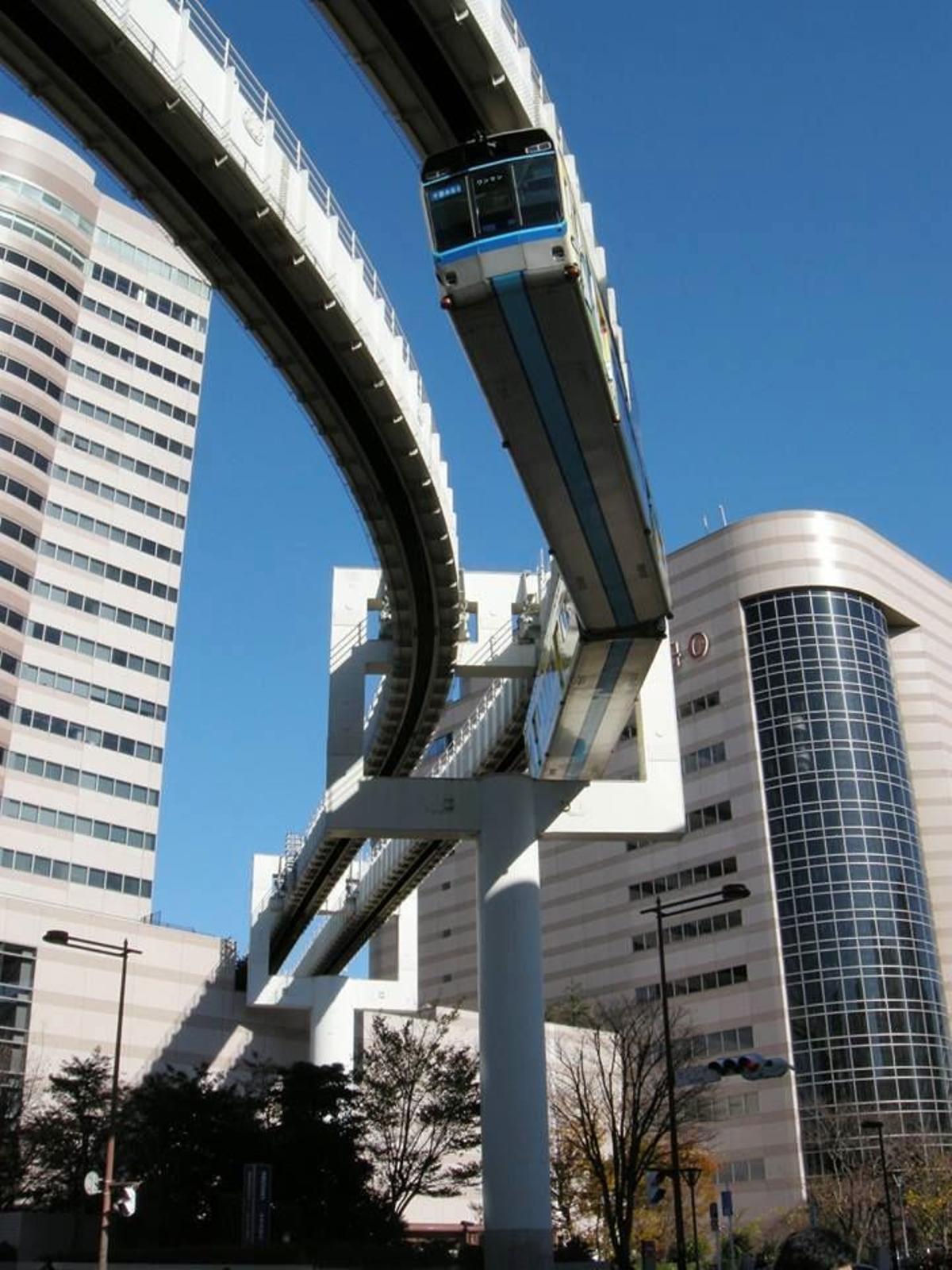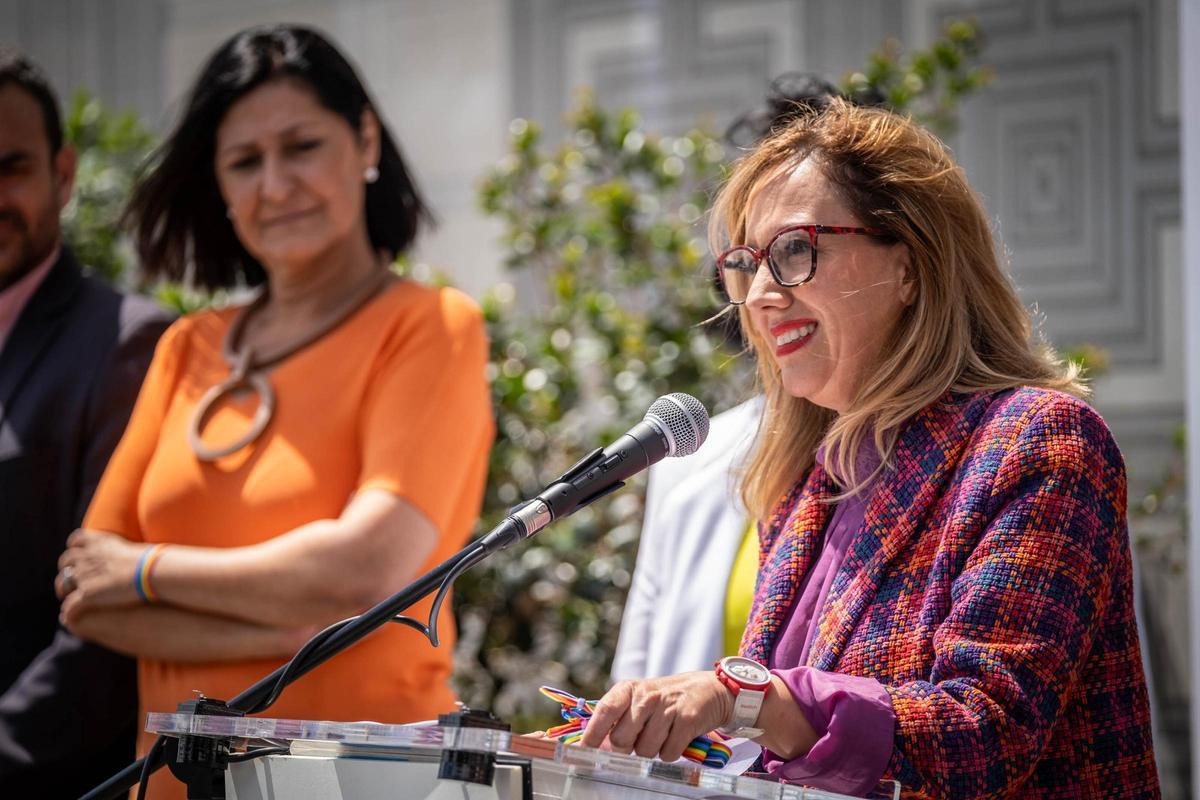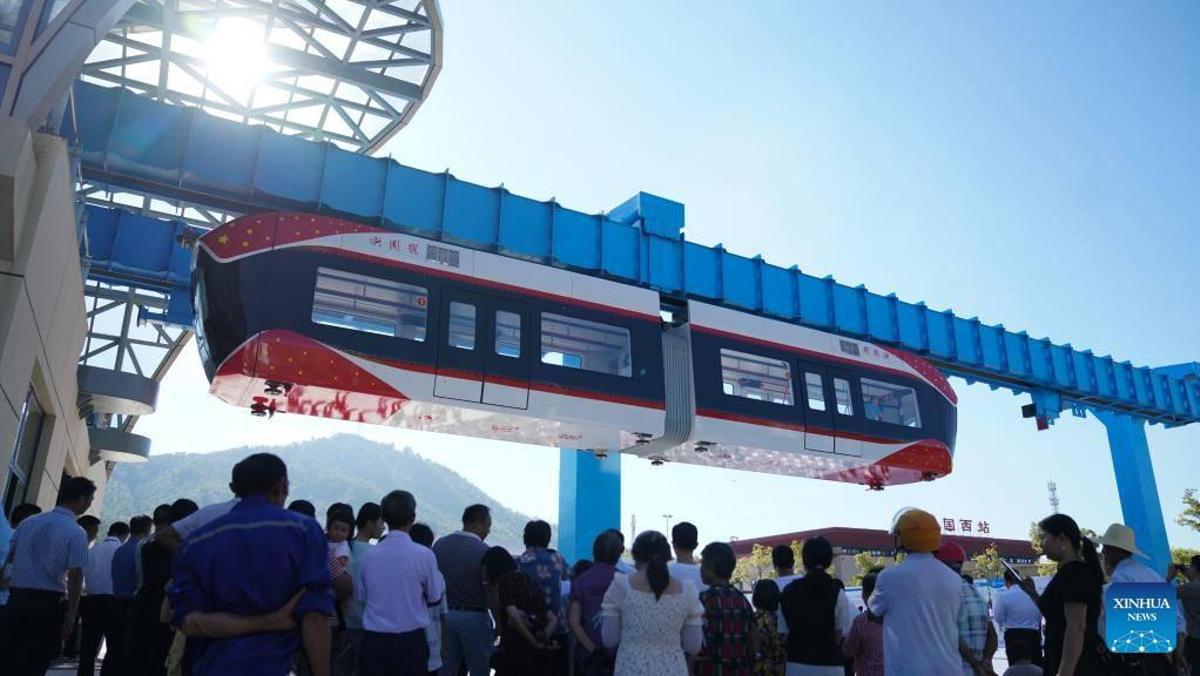The Tenerife Island Council will organise an international ideas competition before the end of the year to design the Northern rail line. This was announced on Friday by Rosa Dávila, president of the island’s Corporation, during the debate on the state of the island.
The competition will focus on avant-garde projects based on hanging trains or magnetic levitation trains, which have been highly successful in countries such as Japan and China because they do not consume as much land or energy as conventional trains.
“I take this opportunity to announce that, before the end of the year, we will convene the International Ideas Competition for the Northern Railway in Tenerife, which will be the starting point for an avant-garde rail project of the latest generation,” announced Rosa Dávila to all the board members.
During her speech, the president of Tenerife elaborated: “We must think big and ahead to the future: elevated solutions that run above the motorway without consuming more territory, suspended monorail trains or other solutions that already exist and work in Japan or China.”

One of the suspended trains operating in Japan. / E. D.
“The president emphasised the importance of not using more land, highlighting that elevated infrastructures can integrate more harmoniously into the Tenerife landscape, minimising environmental impact and contributing to smoother and more efficient mobility.
Additionally, Dávila reiterated her call for collaboration and consensus among all political and social forces on the island and once again proposed a Grand Pact for Mobility in Tenerife. This pact must include all opposition political forces because, in this crucial matter, we can all contribute and must,” she added.
The Grand Pact for Mobility in Tenerife seeks to unite efforts to address the transportation challenges on the island, promoting solutions that enhance the quality of life for citizens and reduce traffic congestion. This initiative reflects the commitment of the Tenerife Island Council to work inclusively and collaboratively to build a more sustainable and efficient future.

Rosa Dávila, this Thursday at the reading of the manifesto for LGBT+ Pride Day. / Andrés Gutiérrez
There are several types of elevated trains that utilise a technology different from conventional ones, which consume a lot of energy and land. One of them is the suspended monorail or hanging train, implemented in Japan, Germany, and China, a transportation system complementary to conventional trains that uses a single rail.
In fact, this technology emerged in the last century. During the first half of the 20th century, many monorail designs were proposed that never got past the prototype stage. It was in the second half of the 20th century when a technological solution that works was achieved.
There are several types of elevated trains that utilise a technology different from conventional ones. One of them is the suspended monorail or hanging train, implemented in Japan, Germany, and China
One of the earliest experiences, in the 1950s, was the Alweg design by a German company for a beam monorail. A first prototype based on this design was created in 1957 in a district of Cologne (Germany) successfully. Later, in the 1960s, the Safege design for suspended monorails emerged, with a first prototype on the outskirts of Orleans (France).
At present, there are hanging trains with both short and long routes in Japan, China, Germany, and Australia. The country that has bet the most on this technology is Japan, where currently three suspended monorails operate, the Shonan Monorail between Kamakura and Enoshima, the Chiba Urban Monorail and the Sky Rail in Hiroshima. All of them are delivering excellent results.
Another option is the magnetic levitation train, type maglev (from the English magnetic levitation), a transportation system that includes the suspension, guiding, and propulsion of trains using a large number of magnets for levitation and propulsion based on magnetic levitation.

MagneticTesla Train Revolutionizes Transportation in China. / E. D.
This method has the advantage of being more efficient, quiet, and sustainable than conventional trains. These trains can easily exceed speeds of 500 kilometers per hour. The first fully automated low-speed maglev commercial train operated from Birmingham International Airport to the city station between 1984 and 1985.
The highest demonstrated speed of a real maglev in commercial operation is achieved by the German train Transrapid installed in Shanghai, China, which transports passengers along 30 kilometers in just 7 minutes and 20 seconds, routinely achieving a maximum speed of 431 kilometers per hour and an average of 250 along the route.
For the Tenerife South Train project, the Cabildo has already decided that it will be a conventional suburban railway, which will start to develop with a specific section: San Isidro (Granadilla de Abona) and Adeje.
Regarding this southern line, Rosa Dávila pointed out in the debate on the state of the island that “when we build it, the train route from San Isidro to Costa Adeje will be the third most important railway system in all of Spain, only behind Madrid and barely behind Barcelona: it will serve two regions through which 500,000 people move daily.”
“The most important thing is that it will allow us to leave thousands of cars at home. For this, it is essential for Tenerife to be part of Spain’s general rail network to access state and European funding,” emphasised the President of the Cabildo, to clarify: “Unfortunately, in the four years of the previous term, no one had explained this to the Minister of Transport.”
For the Tenerife South Train project, the Cabildo has already decided that it will be a conventional suburban railway, which will start to develop with a specific section: San Isidro (Granadilla de Abona) and Adeje
[–>
“This team,” referring to the Cabildo Government formed by CC and PP, “has had a high-level political meeting with the Minister in less than a year, as well as several follow-up meetings with the General Secretariat of Railways and the Canary Islands Government.” “And in the coming months, we will be in Brussels seeking its funding. If Spain is a global power in railway transport, Tenerife must live up to it, with innovative solutions that do not require lengthy and costly expropriations,” concluded Rosa Dávila.
Given that these are very costly projects, the Canarian Government, in coordination with the Cabildo of Tenerife, is committed to developing them in sections to start them as soon as possible. The Sustainable Mobility Plan for Tenerife includes a rail ring that incorporates, in addition to those in the South and North, the West line – connecting Icod de los Vinos and Adeje – as well as an underground line between Güímar and La Orotava. The total cost is close to 6 billion Euros.
[–>
The Canarian Government and the Tenerife Cabildo prefer to break down the South and North lines to make them viable. The first action to consider would be the mentioned section from San Isidro de Granadilla to Costa Adeje, to then gradually complete the line from the South to Santa Cruz. “It must be taken into account that just this section, including the stations and the depots, would cost about 800 million,” clarified Rosa Dávila in statements from last week. It would be a conventional train like the suburban ones, passing through various points, including Reina Sofía Airport.
















